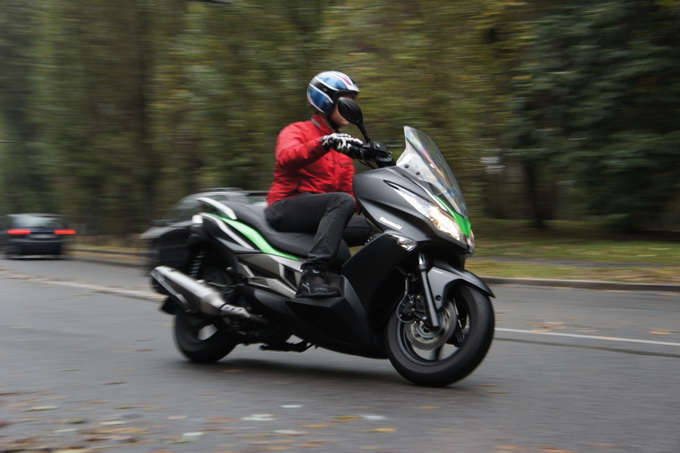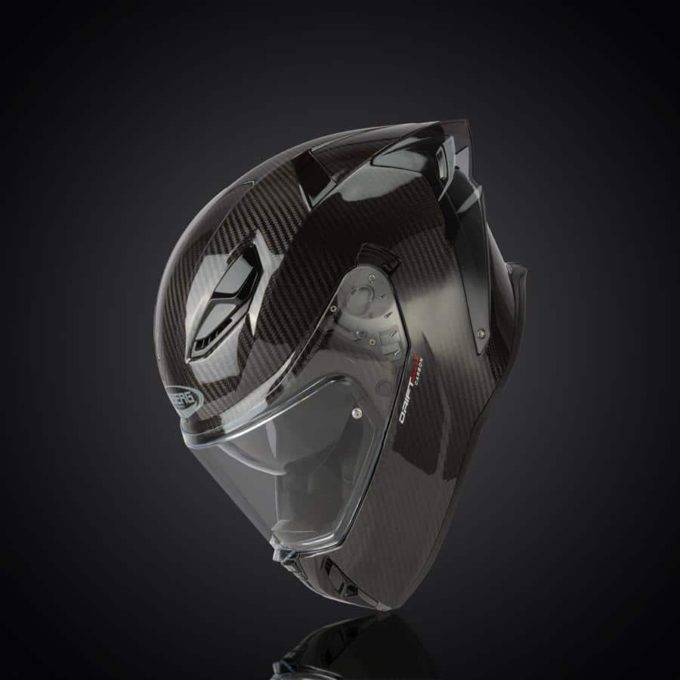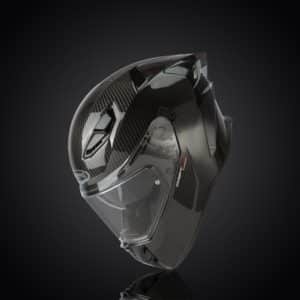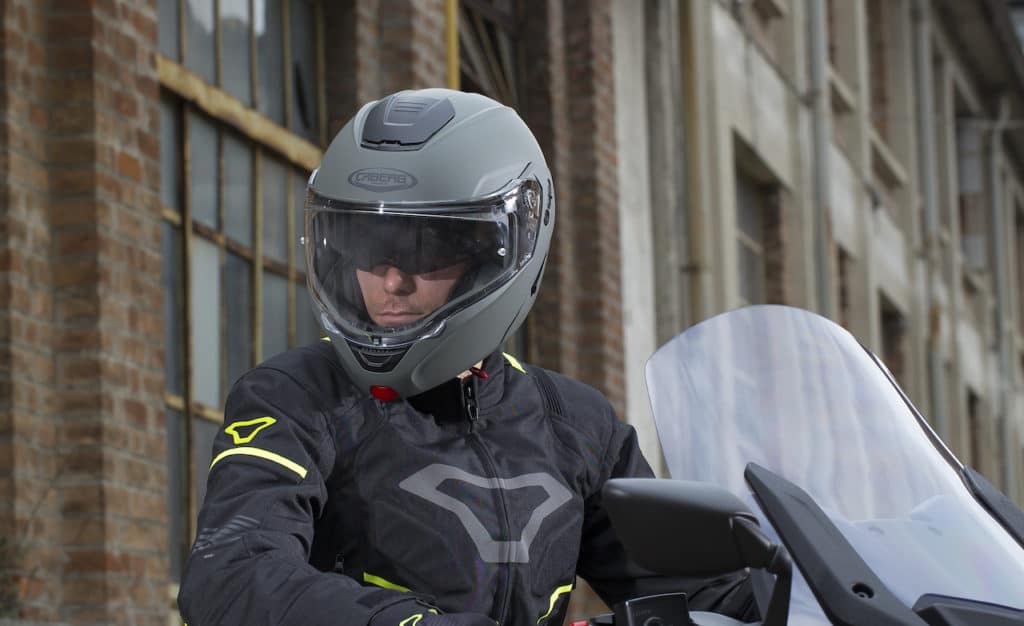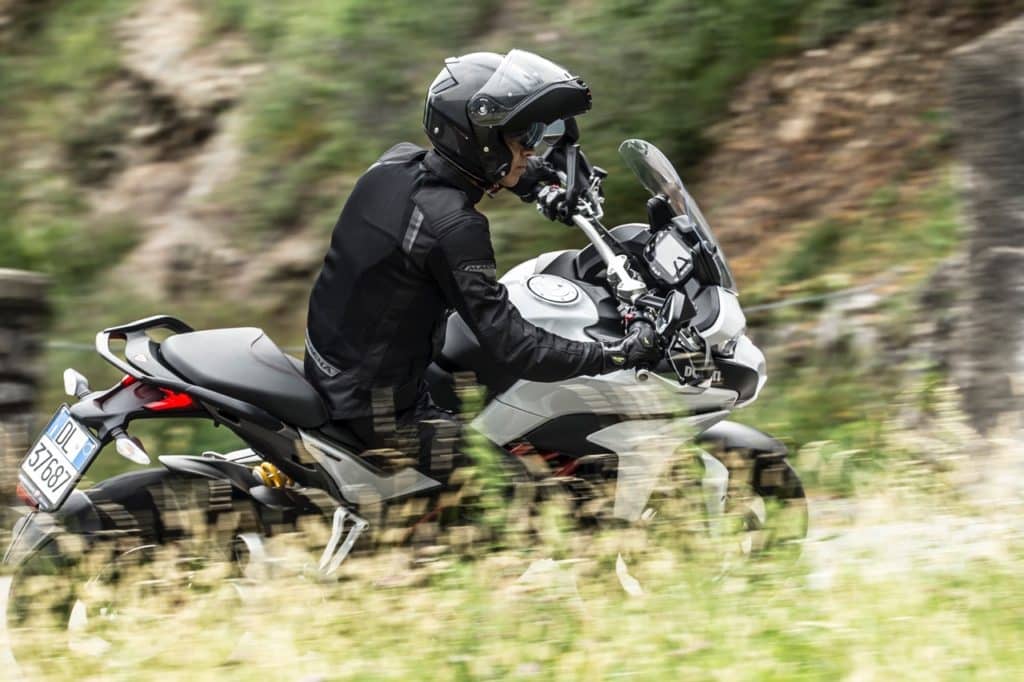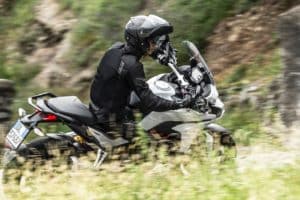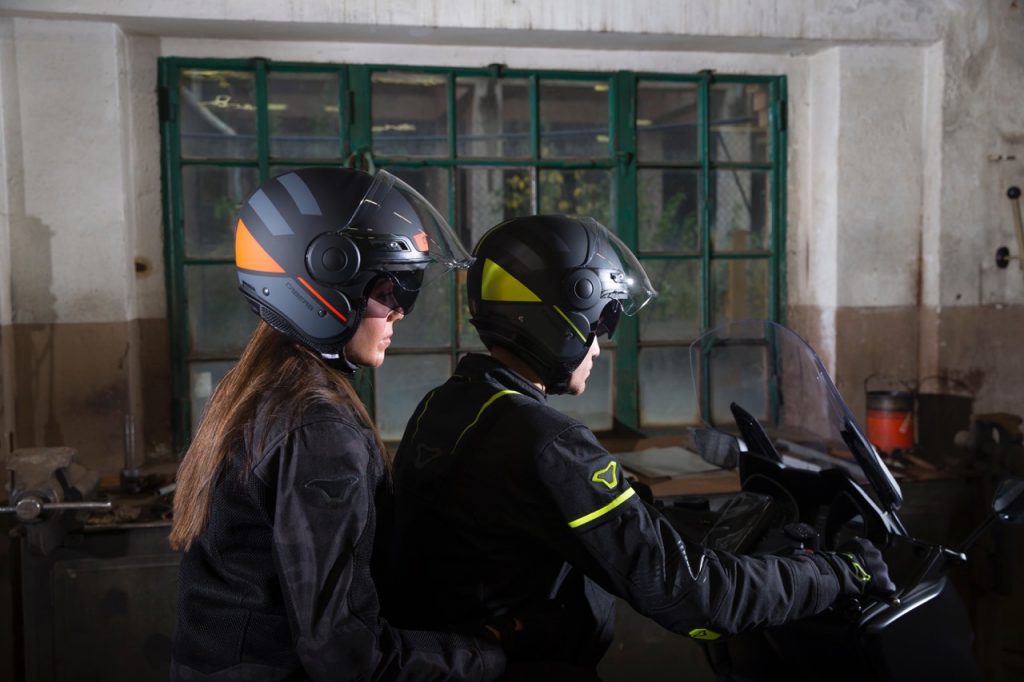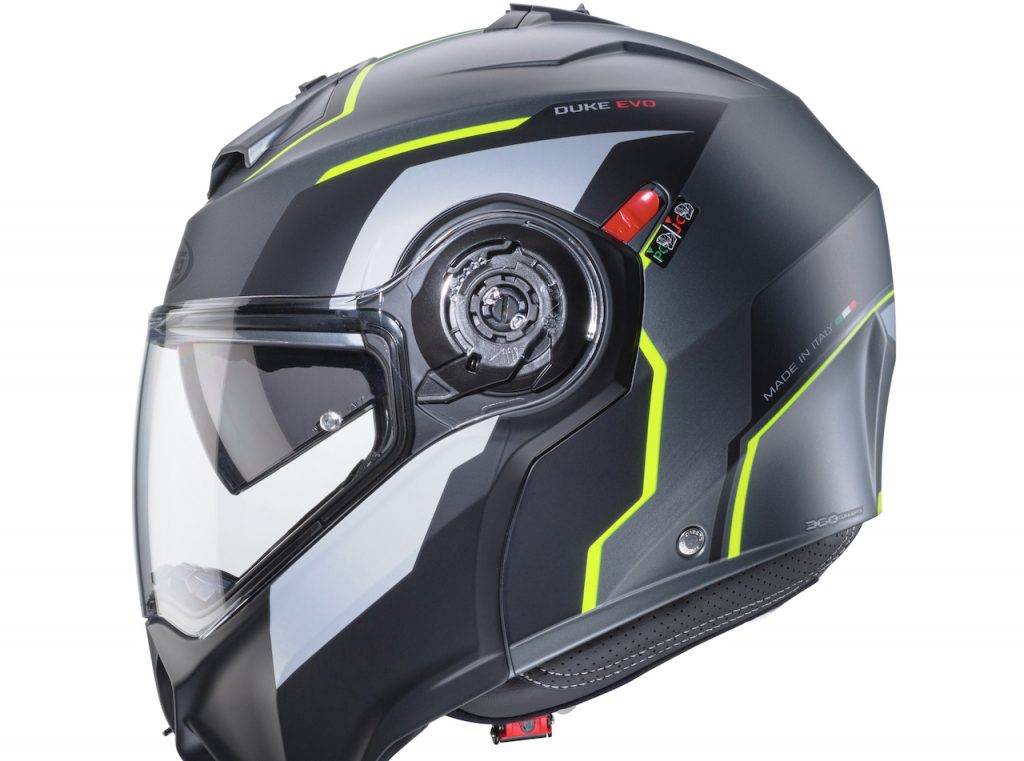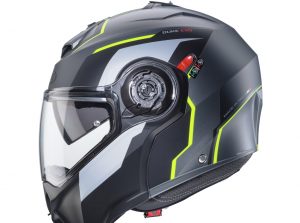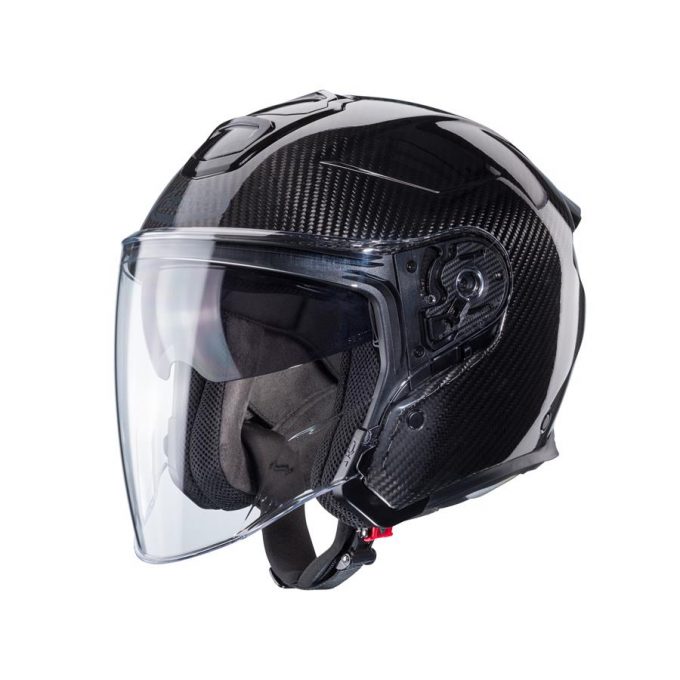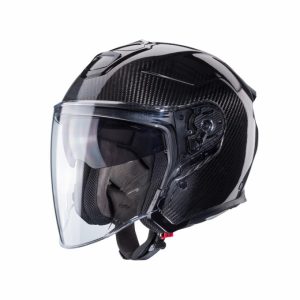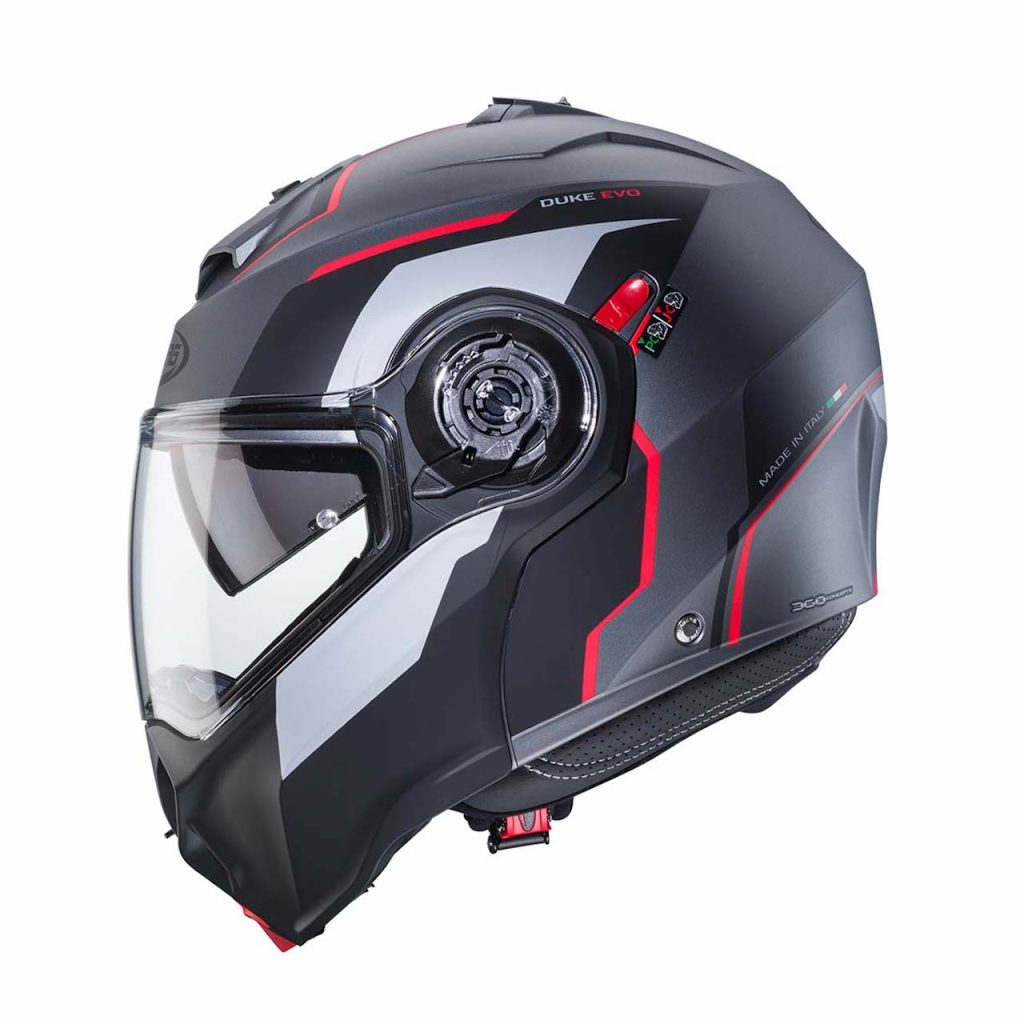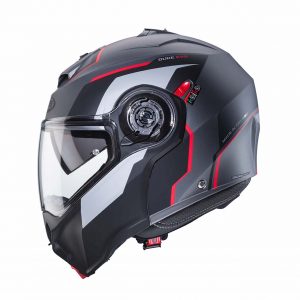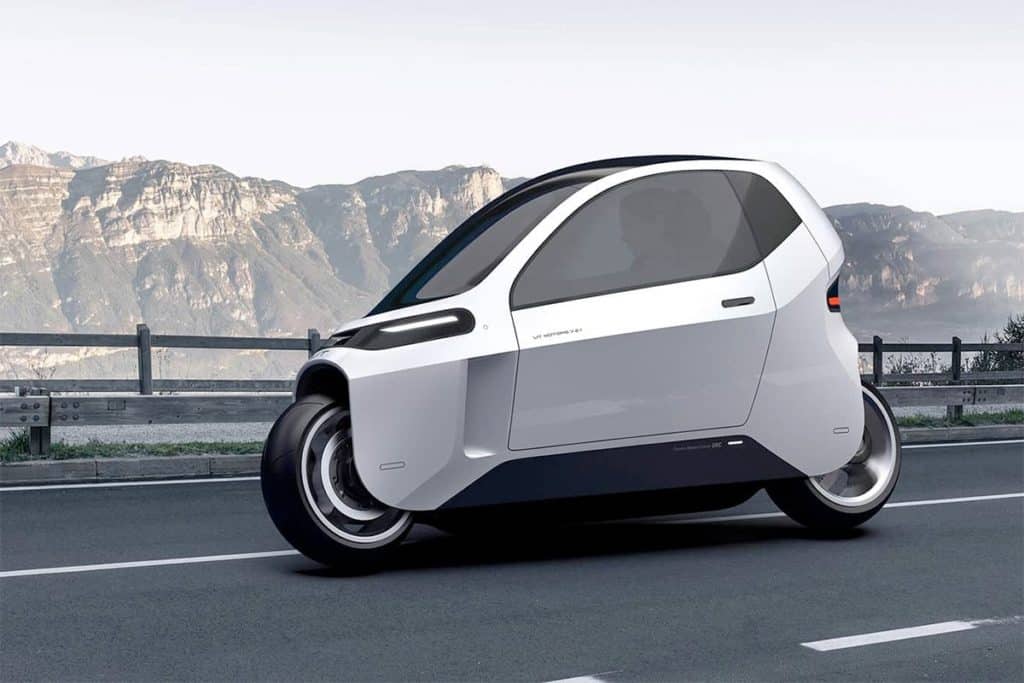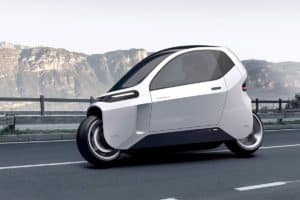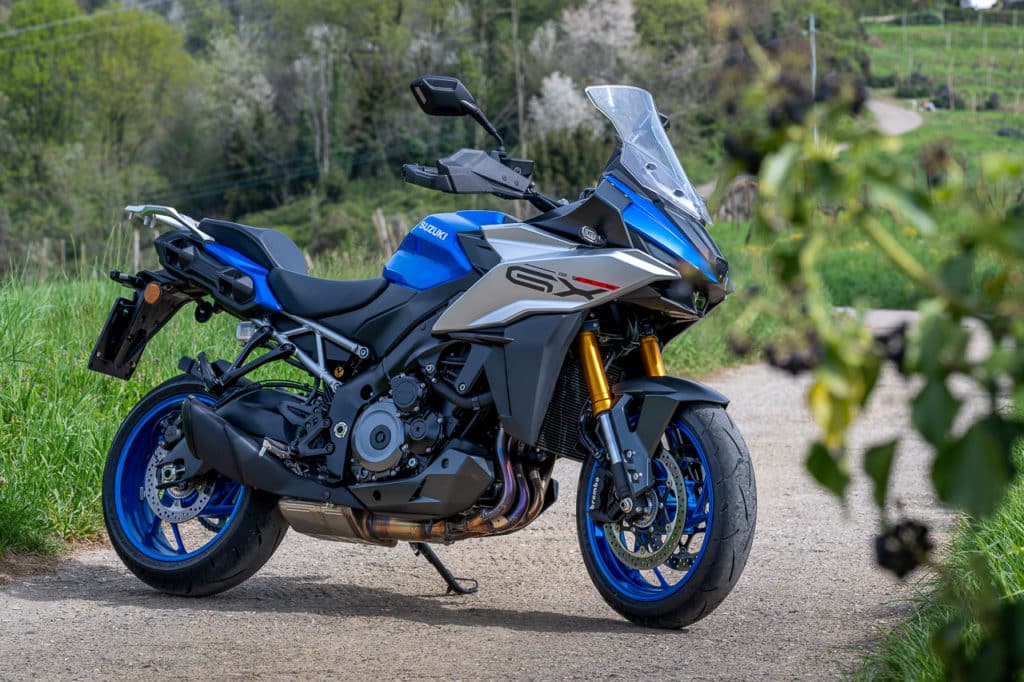Kawasaki J300 – Road test 2014
Excellent debut in the scooter segment
Kawasaki J300: Market choices. The numbers in our area, and not only, are made precisely with medium-displacement scooters. Not having a product in this segment means giving up important market shares. Developing one from scratch, however, would have required investments and know-how that the Akashi house did not have. The risk was to make a hole in the water. The choice to exploit the partnership with Kymco, developing the J300 on the basis of the Downtown has instead allowed us to debut with an already excellent scooter, because it is the evolution, with many small improvements, of a much appreciated model. In reality, this is not an absolute debut for Kawasaki, because it has already been active on the Asian market for some time, but with products that are different from our scooter concept. In Europe the choice is instead an absolute first, one of those that make some purists turn up their noses, but these are attitudes that are out of date. It would not have made sense to close in on extremist positions, leaving the competition the freedom to divide up an interesting and growing market, given the importance of urban mobility and the increasingly strict regulations on polluting emissions. However, the choice was painful, it is evident even just from the fact that it is only happening now, twenty years after we started talking about it. In fact, we were in the mid-90s when the first Kawasaki scooter project was discarded, based on the idea of innovating, adopting the GPZ500 engine and creating something that perhaps no one has created even today. Now that the first step has been taken, and after the special effects of the THREE HUNDRED horsepower H2R, the curiosity to discover how Kawasaki will be able to amaze us even with scooters is great, and perhaps some ideas launched last year with the J Concept it could become reality.
Aesthetics and finishes:
rating: 




Excellent finish and Kawasaki look, with a Ninja Style nose
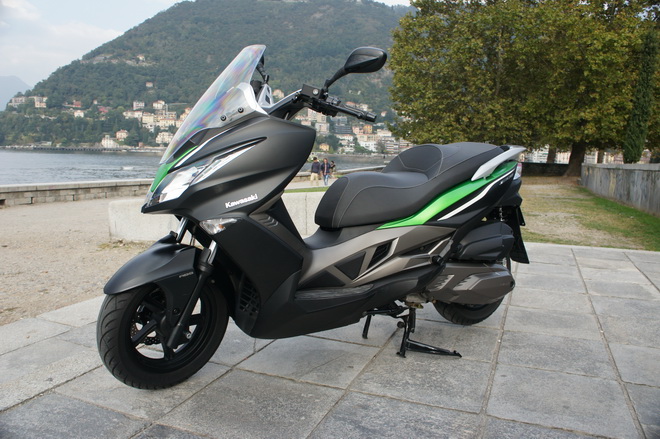
In the past, many customers of the Japanese company have been forced to pair their "green" scooter with a competitor's scooter, perhaps with dull colors and an abandoned appearance. From this year Kawasaki gives him the opportunity to comfortably go to the office during the week with a scooter that is decidedly closer to the spirit of the Akashi company. The specimen under test is then enriched by a very attractive colour, which highlights it a markedly sporty appearance, characterized by two front headlights, a strong reference to the sports bikes that inspire it, i.e. the Ninja and "Z" families. In fact, if under the skin it inherits the Downtown platform, revised and optimised, in its look the J300 is all Kawasaki. The front, in particular, in addition to the headlights, has a very slender and characterful line, and we also find the arrows protruding from the fairing, another typical element transplanted from the Japanese motorcycles. The windshield fairing is low, the sporting imprint imposes this choice which however leads to rather limited aerodynamic protection in use. The finishes are excellent, as evidenced by, for example, the adjustable brake levers, a semi-rare feature in the scooter sector, or the closing of the ignition lock, to prevent dirt and humidity from entering, as well as to prevent attempts of forcing. The blue backlighting of the instrument panel is choreographic in the absence of light. Panel with a rather sporty layout, thanks to the two circular instruments, combined with the display for other data. The central tunnel is quite low, allowing you to store a bag or some object, without feeling too much the absence of the flat platform. However, the feet are limited to a single position, because there is no space to move them forward when traveling straight ahead and trying to get comfortable (in the classic position so dear to T-Max owners). They close the picture convenient front storage compartment with 12V socket, but without a lock and a compartment saddle pad with a decent capacity, there is room for two helmets (not full-face ones, but few people use them with a scooter), or a helmet and a good-sized bag. In addition to wanting to give it a more aggressive appearance, and in this we leave the judgment to you, even if for us it is a result achieved, the intervention of the technicians focused above all on details and attention to detail. The starting point was excellent, but the intent was to eliminate as many defects as possible and improve the scooter where the need was most felt. The owners of the Downtown were interviewed, also taking a look at the forums dedicated to the successful Kymco model (the Italian one in particular, given that ours is the market that was most vocally asking for a scooter from Kawasaki), and the research served to build the list of necessary interventions. For example, the under-seat light was in the lower part of the compartment, where it could end up being covered by the objects stored there. On the J300 it has been moved upwards and a sensor replaces the classic switch, which in the long run can be a source of failures. The saddle is better padded, the passenger footrests have been redesigned, as have many other details. In practice, if to the less expert eye the two scooters may seem very similar, what is convincing, not having the possibility of making a direct comparison, are the opinions of the owners of the Downtown 300, who find in the J300 the answers to their complaints and appreciate the many small improvements. One of them points out to us: the battery, which is difficult to access on the Downtown, on the J300 can be easily removed from the compartment under the saddle in just a few seconds.
Engine and performance:
rating: 




One of the best in its category
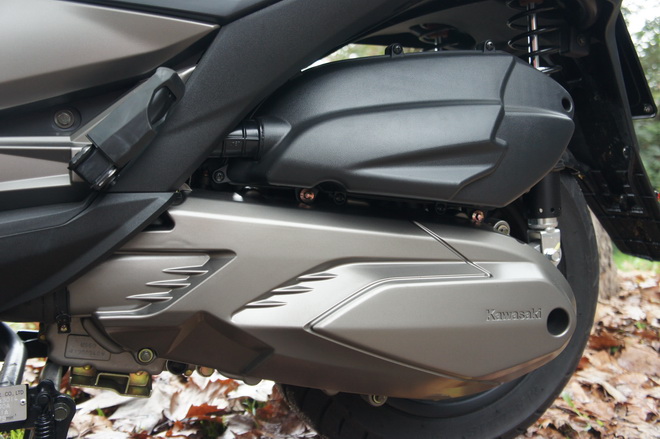
The 299 cc water-cooled single-cylinder is capable of 28 horses at 7.750 rpm, with one of the highest specific powers in its category. The four-valve single-cam injection engine, which is part of the Kymco “G5” family, is a flagship of the Kaohsiung house. A lot of design work was done to reduce internal friction, adopting innovative solutions, such as using ball bearings between the cam and rocker arm. By doing so, three big advantages were obtained, one reduction of vibrations and consumption, and high reliability, at the level, if not superior, of the best competition. The high specialization in the field of engines for scooters makes Kymco the preferred partner of many premium brands who have relied on this company for the supply of OEM engines, or to use them as a starting point for their own project (see BMW for their twin-cylinder scooters). The powertrain in this case was not overturned, but still revised by Kawasaki in the electronics, to make it more regular and fluid in delivery and also fuller at medium speeds, ensuring better recovery. The mapping, together with some other refinements to the transmission, makes the J300 very enjoyable, the irregularities that some complained about in the Downtown disappear. Good torque, 28,7 Nm, delivered at 6.250 rpm. Performance is the best among scooters of the same displacement. Starting from a standstill and picking up are excellent, and motorway speeds can be quickly reached when moving in an extra-urban context. On a slight slope we brought the speed to the limiter almost without realizing it, thanks also to the stability and discreet silence of the engine. For the record, the cut occurs at the threshold of the indicated 160 km/h, not bad for a 300.
Ride and handling:
rating: 




Handy and comfortable, as well as pleasant to drive and surprisingly sporty

Even in the chassis, Kawasaki's intervention is immediately noticeable. Lots of trusts compared to the Downtown, a lot of work has been done on the suspension, to make the J300 more comfortable in city use, but also more sporty and fun when cornering. In fact it is comfortable in the city, thanks also to a soft saddle. The footrests are tapered to make it easier to put your feet on the ground. The brakes have been revised and improved, with 260 and 240 mm wave discs, two single discs, in both cases with two-piston calipers, supported by a system with metal braided hoses, and ABS in the case in the specimen under test. In fact, versions with are available (+400 euros) and without anti-lock. The weight is 191 Kg, while the 120/80 front and 150/70 rear tires are mounted on 14" and 13" rims respectively. The steering angle is excellent, 40°, which allows you to navigate traffic comfortably. Thanks to the low center of gravity and the good balance, you can also do this by keeping your feet firmly on the footboard and managing everything comfortably with the throttle and handlebars. Driving it outside the city the feeling is immediate, it turns out to be positive a “Kawa” set-up, which allows you to slam the J300 from corner to corner with great ease, we almost don't realize that it is bending more and more, without the slightest uncertainty. The only small flaw, if it can be defined as such given that we are evaluating a medium-displacement scooter and not a sports motorbike, are the bumps and sways in bends traveled at speeds above 120 km/h, a situation in which the chassis starts to go too far. in crisis. Overall a really great scooter, one of the best 300s on the market, which demonstrates for the umpteenth time that 13-14" wheels are a better compromise than the tall wheels that are so fashionable in Italy, guaranteeing better stability and an excellent driving feeling.
Price and consumption:
rating: 




Prices around 5 thousand euros, very low consumption

The J300 is available from 4.730 euros if you choose a solid colour, 150 euros more for the eye-catching color of the sample being tested, another 400 euros to switch to version equipped with ABS, that as you can see in these photos it comes to a total of 5.280 euros. A fair price given the quality and performance it offers, as well as obviously a pleasant appearance, with the right amount of character you want from a vehicle that shows off the Kawasaki brand. Consumption is very low, 30 per liter is within reach and easily reachable, and thanks to the 13 liter tank, the autonomy is in the order of 350 or more kilometres. Among the most interesting accessories, even if the saddle pad itself has a good capacity, is the 39 liter top case, as well as the possibility of purchasing a 2-year extension of the official Kawasaki K-Care Warranty Plus warranty.
PROS AND CONS
We like it:
Aesthetically pleasing and with excellent finishes, good performance and comfort
We do not like it:
Instrument controls difficult to use
Kawasaki J300: the Motorionline Report Card
| Motor: |      |
| Handling: |      |
| Gearbox and transmission: |      |
| Braking: |      |
| Suspensions: |      |
| Guide: |      |
| Pilot comfort: |      |
| Passenger comfort: |      |
| Equipment: |      |
| Quality price: |      |
| Line: |      |
| Consumption: |      |
Test clothing:
Jacket: Urban Toucan Agos
Shoes: Xpd X-ZERO H2OUT
Gloves: Dainese Druids S-ST
Helmet: Caberg Freeride UK
if you want to always be updated on our news
Follow us here

